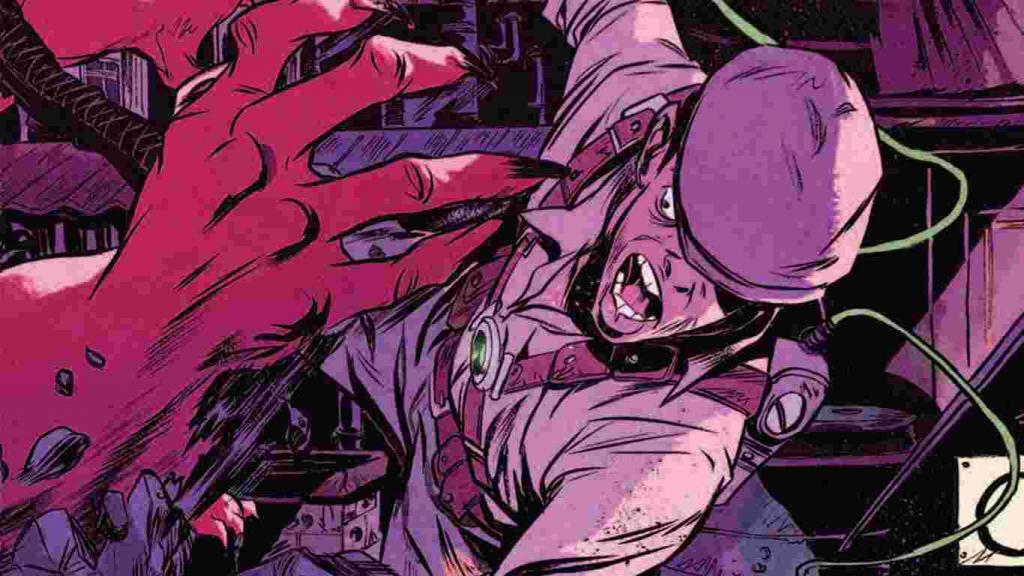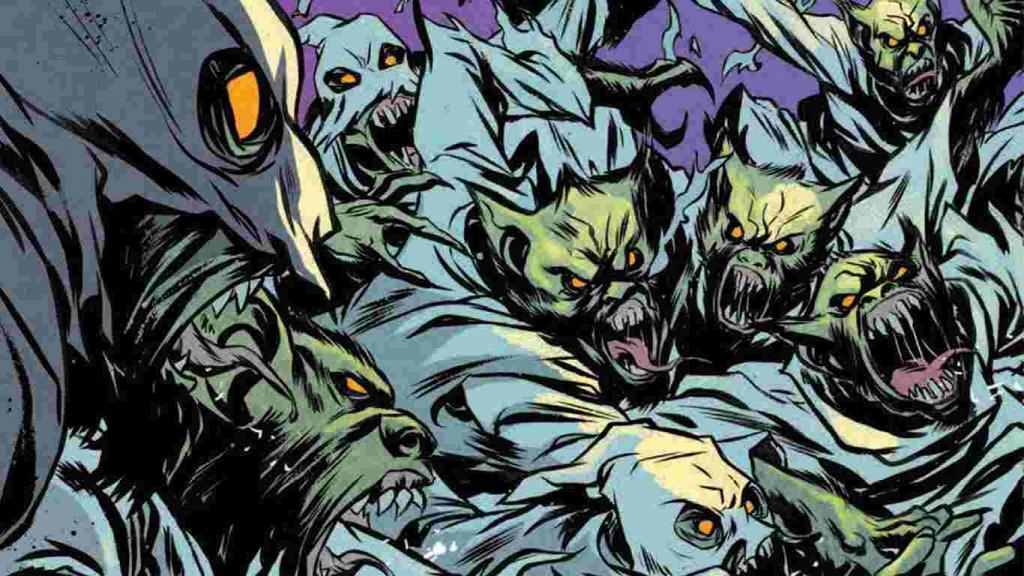Social Horror, which marries social commentary with the horror genre, which has existed as early as Invasion of the Body Snatchers (1956) experienced a resurgence shortly after the release of Jordan Peele’s Get Out (2017). Peele’s culture shock paved the way for a variety of films, books, and comics. However, the best part of this impact may be the increased inclusion of diverse voices speaking to their own histories and adversities. It’s no coincidence that this story takes place during the Harlem Renaissance, because it is undoubtedly part of a new renaissance of socio-political art to come from a modern age of political unrest.

Bitter Root (2019) presents a historical fantasy where the power of hate can literally transform your being. Told through a kaleidoscope of colorful images, humorous banter, and breakneck action sequences, this series is what you’d get if Mike Mignola combined his Hellboy comic series with the Lovecraftian-inspired novel Lovecraft Country. It’s a fun dark fantasy that balances a ton of themes while also managing to land each punch.
The narrative is set in 1924 Harlem not too long after the 1921 Tulsa Massacre. It focuses on the Sangerye Family, who were once a family of notorious monster hunters before they were broken up by tragedy and personal differences. When a new supernatural danger hits the streets, the Sangerye’s must overcome their past challenges and reunite in order to save New York and quite possibly the entire world.

* Puzzle Box Horror may earn a commission when you buy through links on our site.
This first volume serves as a quick introduction to the different members of the Sangerye family where, much like other comic book super families such as The Umbrella Academy and Doom Patrol, special attention is given to what makes each of them unique. Every character rocks their particular skill set while providing a distinctive perspective on their world that is both generational and intrinsic to who they are. A personal favorite of mine is Berg, who gets an A+ in etiquette and monster brawling. There’s also Ford, who is a Django-type legend that kicks ghoul ass with a massive glock like something out of Doom.

Despite a story that is built on serious themes, the content never feels heavy. This is mostly attributed to the vibrant art style that resembles Mike Mingola’s, along with a dash of whimsy found only in golden age Disney films. The opening quite literally has music dancing off the page as we’re introduced to the sights and sounds of 1920’s Harlem. Another standout in this comic is the liberal use of color. Each page seems to have its own color palette, always more bold and surprising than the previous page.
Fans of Guillermo Del Toro and Jim Henson would lose their mind with the cast of monsters that we come across in these five issues. From orcs and Final Fantasy-like sprites to the more gargantuan crow-head behemoths, you will be treated to a smorgasbord of monstrosities. Most of the ghoulish entities are drawn with a cartoonish quality that gives this dark fantasy a satirical layer, like when a gaggle of Ku Klux Klan members are transformed into slobbering goblins. They appear as scary and ridiculous as the hate that created them.

While the pages are filled with action, the horror lies in the reality of the world that the Sangerye’s are living in. It’s a world that’s not too far from the Harlem it was based on or the state of America that still exists to this day. Despite the sunny disposition that this comic carries, this is ultimately a story about hate and how it can literally change you into something monstrous. There is a moment in the comic when the family wonders if this transformation can be reversed or if it’s permanent. The response to that question is answered, but I imagine that it will be examined more deeply in future issues.
These five issues are undoubtedly a jazz set charging with energy, breaking only to give each character a momentary solo. This first volume of Bitter Root has nearly everything you could want from a dark fantasy comic series. The world-building balances neatly with its socio-political themes as we are introduced to both the magic and conflict that surrounds this whimsical family’s lives. This volume concludes with a stunning reunion and eerie revelation that will definitely have you ready for the next set of issues. The Sangerye’s are here to stay as they weave their magic, brawl through hordes of snotty imps, and stomp down on the hate that is attempting to consume their world.
Bitter Root Vol. 1 is available now on Amazon and Image Comics.

Like most Constant Readers, Max’s love of horror began with Stephen King. After devouring stories of rabid dogs, sinister cars, and bloodied prom queens he went on to the next best thing: Slashers. While he enjoys the mindlessness of Jason Takes Manhattan and Malignant, he’s also a major sucker for complex stories like Midsommar, The Only Good Indians, and Get Out where the genre is used to tackle very real horrors that don’t wear a mask. Horror films may take up most of the space on his shelves, but he also has a deep love for comics and literature that can make you look over your shoulder without the suspenseful score.
When he’s not consuming every medium of entertainment, Max works in Civil Engineering while finding time to be a struggling writer. He writes for his own personal enjoyment and occasionally for the pleasure of others with hopes of eventually publishing a work of his own. He believes that horror is the one genre that isn’t afraid to explore the world with full and total honesty.
